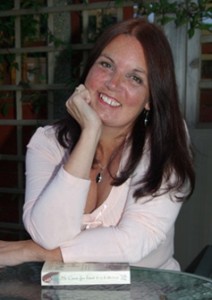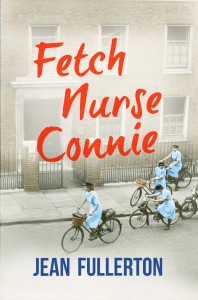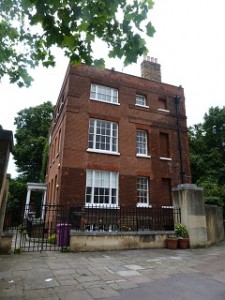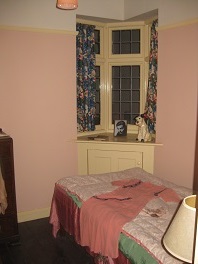Today, I am delighted to welcome historical novelist Jean Fullerton to the writing blog. Born into a large East End family, Jean was brought up in the overcrowded streets clustered around the Tower of London. Her Victorian stories shining with authenticity have delighted both readers and critics. Jean’s latest book, Fetch Nurse Connie, set in 1945, draws on her own experience as a district nurse in East London. Jean says, ‘I am also passionate about historical accuracy and I enjoy researching the details almost as much as weaving the story. If one of my characters walks down a street you can be assured that that street actually existed. Read on to see how she puts together the world of her characters…
 World-building is a process of creating a fictional time and place to set a story. The world can be very different to ours as in the case when Gene Roddenberry created science fiction hit Star Trek or it can be based on something historical as in George Martin’s Game of Thrones or as in Alison’s Roma Nova series, a bit of both.
World-building is a process of creating a fictional time and place to set a story. The world can be very different to ours as in the case when Gene Roddenberry created science fiction hit Star Trek or it can be based on something historical as in George Martin’s Game of Thrones or as in Alison’s Roma Nova series, a bit of both.
Although I’ve set my East London Nurse series in an actual time and place and in real streets previously I still have to invent a fictional world for Nurse Connie and Nurse Millie to inhabit. As with all fiction the closer it is to fact the more convincing it is. As always the answer to building a believable world for my characters to inhabit
To start with I had to set in place a pre-NHS nursing association where they could work. I looked at nursing associations of the period and was fortunate to discover the East London Nursing Association which covered the area where Connie and Millie would have worked.
It was first founded in 1867 by the redoubtable Ellen Ranyard, a non-conformist minister’s wife and social reformer. I also discovered the real-life pre-war Superintendent, Eileen Sankey had written her biography, so much of the Association’s set up and structure is based on her account.
That was fine, but then I had to imagine an association’s headquarters which was not only a clinic but also where the nurses lived. Most of the houses in the area are two up two down working men’s cottages and many of them had been blasted away in the Blitz. However, in its heyday of the mid 1700s, Wapping boasted a number of fine four-storey merchant houses in the area, so I used St George-in-the-East’s Georgian Rectory as the template for Munroe House.
I use the actual streets of the area but I have to be careful with numbers as it is possible someone who lived at 64 Redman’s Road might read my book and take exception to me putting a foul-mouthed blaspheming, racist character in their dear old nan’s house! So I either omit the number or in the case of 71 Anthony Street, where Connie and Charlie were going to live it’s the house where I lived as a child and has since been demolished.
The markets, Watney Street and the Waste, are real markets although the stallholders are created characters as are all Connie’s quirky cockney patients. Wherever possible, I used actual shops like Boardman’s in Stratford and Wickhams Department store on the Mile End Road. All the breweries, laundries and halls are authentic, including the boxing club where Charlie goes.
One of the biggest challenges, though, is creating the late 1940s medical world in which Connie and Millie work. Again I’ve drawn on nurse biographies of the time plus my extensive collection of period nursing and medical text books. Like Connie and Millie, I’m a district nurse and although not strictly world building, I had to re-imagine illnesses and situation from a 2015 nursing perspective into knowledge and available equipment to Connie in 1945.
Of course, I actually started building my East End world ten years ago when I wrote my first book, No Cure for Love, which is set in 1832. It featured my lovely hero Dr Robert Munroe, after whom Munroe House is named. Well, actually not him directly but his daughter Robina Munroe who was born in the first book. We meet her again in the second book, A Glimpse at Happiness, when she helps her sister Josie. I haven’t written her story yet as I’ve been busy with Connie and Millie’s post-war stories, but I know Robina wants to be a doctor and in the process travels to Sebastopol with Florence Nightingale. When she returns from the Crimea, she founds the St George and St Dunstan’s Nursing Association where Connie and Millie work. I even refer to a full length portrait of her resplendent in a crinoline and tartan shawl hanging in the nurses’ common room.
I also used the same house that my heroine Ellen O’Casey lived in in No Cure for Love, as the house where Connie and Charlie are going to move into and if you notice Connie and Millie dodging McGuire’s coal lorries as they cycle along that’s because my heroine, widowed Mattie Maguire in Perhaps Tomorrow, founded the company!
So I think you can see that no matter what they write, be it alternative histories or scI-fi, modern or historical, ALL authors build worlds.
We’re just programmed that way.
Thank you, Jean. You are a true world-builder!
What’s Fetch Nurse Connie about?
 London, 1945 and as the end of the war is declared and the troops start returning home, the nurses of the East End are joining in the celebrations.
London, 1945 and as the end of the war is declared and the troops start returning home, the nurses of the East End are joining in the celebrations.
For Nurse Connie Byrne the end of the war signals the beginning of a new chapter and as the revelries go on around the city, Connie’s mind is on another celebration that she’ll be able to arrange – the wedding to her sweetheart, Charlie, set to take place as soon as he arrives home. But when Connie meets Charlie off the train at London Bridge, she finds that his homecoming isn’t quite going to go according to plan…
Connie’s busy professional life, and the larger-than-life patients in the district, offer a welcome distraction, but for how long? If nursing in the East End has taught Connie anything, it’s that life is full of surprises…
Alison Morton is the author of Roma Nova thrillers, INCEPTIO, PERFIDITAS and SUCCESSIO. The fourth book, AURELIA, is now out.
Find out more about Roma Nova, its origins, stories and heroines…















Leave a Reply